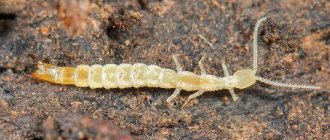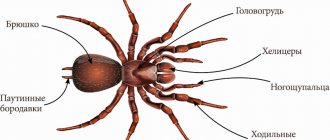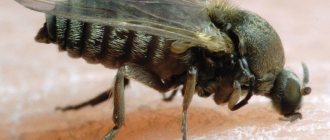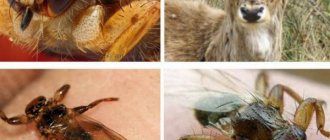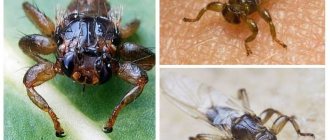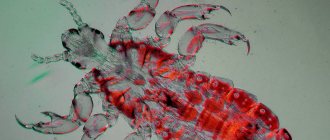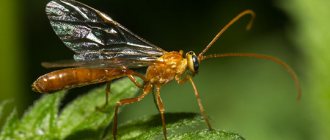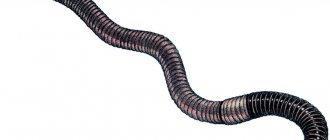Description and features
A huge number of species of various organisms inhabit the water element; most of the planet’s fauna has settled on land.
But the world, rich in life, also represents an underground kingdom. And its members are not only small primitive forms: worms, arachnids, insects, their larvae, bacteria and others. Creatures that spend their days underground also include mammals. Among these creatures one can name a mole . animal has not been studied as thoroughly as we would like. And the reason is in the characteristics of such creatures that inhabit inaccessible areas hidden from human eyes.
These representatives of the fauna are classified as members of the mole family. The physiological details of their appearance prove how well they are adapted to the unusual way of life that is inherent to them, that is, underground. Here, first of all, it would be nice to mention their paws, without which it would be impossible for such creatures to survive in their usual environment.
Moles are not rodents; they dig the ground not with their teeth, but actively using their forelimbs. Therefore, their rounded hands, reminiscent of oars, are quite wide, with palms turned outward. And their widely spaced fingers are equipped with powerful, large claws.
The hind legs are not endowed with enormous strength and dexterity, but mainly serve to rake out soil previously loosened by the forelimbs.
Other features of appearance (they, like those already mentioned, are clearly visible in the photo of the mole ) include: an elongated muzzle, an elongated nose, a short, thin tail. The body of such animals is covered with short fur, so that its length does not interfere with the movement of these creatures along underground paths.
In addition, their fur grows in an unusual way - upward. It is endowed with the property of bending in any direction, which again facilitates unhindered underground movement. The hair tone is usually gray or black-brown.
But there are also exceptions, depending on the variety and some structural features. Albinos are also found among such animals, although very rarely.
Describing the senses of these creatures, it should be noted that these animals are almost blind. Actually, they don’t need good vision. And the small beady eyes of moles are only capable of distinguishing darkness from light.
Their structure is very primitive and unlike the organs of vision of most mammals, and some constituent parts, for example, retinas and lenses, are completely absent. But the eyes of these underground creatures, almost indistinguishable to prying eyes in the thick fur of the animals, are perfectly protected, covered from the ingress of soil particles into them by mobile, often completely retractable eyelids. But the sense of smell and hearing in moles is well developed. And small ears are also protected by skin folds.
In general, the underground world of mammals is very diverse, because quite a few animals that are similar to moles in that they prefer to hide from the dangers of life and the vicissitudes of the climate underground. These include, for example, the shrew - a creature with an elongated muzzle, covered with velvety short fur.
And not all of the mentioned representatives of the animal kingdom necessarily live exclusively and only underground. Yes, they are not there all the time of their existence, but rather they look for shelter by digging holes or finding shelters made by someone else.
Among these are muskrats, which are considered close relatives of moles and are classified in the same family. They are also drawn underground, although they spend half of their existence in water. Living in burrows are, in addition, the well-known foxes and badgers, as well as chipmunks, wild rabbits, a huge number of rodents and many others.
Types of moles
In total, there are about four dozen varieties of moles on Earth. The most common and widely known of them is the common mole, which is also called the European mole. These animals, as you might guess, are found in Europe and are distributed all the way to Western Siberia. They usually weigh no more than 100 g and have a body length of up to 16 cm.
Among other members of the family, some deserve special mention.
1. The Japanese shrew mole is a small animal, only about 7 cm long. In some cases, it can be seen among the tall grass in the meadows and forests of the islands of Tsushima, Dogo, Shikoku and Honshu. The long proboscis of such creatures, located on the elongated muzzle, is equipped with sensitive tactile hairs.
The tail is of considerable size, fluffy, and quite often accumulates quite large reserves of fat. Sometimes it happens that such animals crawl to the surface of the earth in search of food and even climb low bushes and trees.
2. American shrew mole . Such animals are common in some states of Canada and the USA. Their fur is soft, thick, and can be black with a bluish tint or have a dark gray hue. Representatives of this species are similar in many ways to members of the species just described, so much so that some zoologists are inclined to consider them the closest relatives.
Such creatures are approximately the same in size. In addition, the length of the body of American individuals is greatly complemented by a rather large tail. Such animals can also climb bushes and swim well.
3. Siberian mole , also called Altai mole. In many ways it is similar to European moles, however, its female and male representatives, unlike the latter, are significantly different in appearance. And above all in size.
These are quite large moles. Males from the Siberian variety can have a length of almost 20 cm and reach a weight of 145 g, females are much smaller. The fur of the animals has dark shades: brown, brown, black, gray-lead.
The body of such creatures is round, massive, and the legs are short. An oblong proboscis stands out on the narrowed muzzle. Such animals do not have ear shells at all.
4. Caucasian mole . It is also similar to individuals of the European variety, but individual elements of structure and appearance are very unique. Their eyes are even more underdeveloped than those of other moles. They are practically invisible and hidden under a thin layer of skin.
Juveniles of this species boast rich, shiny black fur. However, with age, its shades fade.
5. Mogera Ussuri is a very interesting species, the representatives of which are famous for their size, being, according to these indicators, record holders among all members of the mole family. The body weight of male specimens can reach 300 g or more, and the body size is about 210 mm.
Such animals are common in Korea and China. In Russian open spaces they are found in the Far East and in the regions adjacent to this region. The eyes and ears of such creatures are underdeveloped. Painted in brown tones with the addition of brown and gray tints, in some cases with a metallic tint. This species of living beings has been declared rare, and active measures are being taken to protect it.
6. The star-nosed mole is a North American resident, also called the star-nosed mole. The nose of such animals has a very unique, truly peculiar structure and consists of a large number of small tentacles equipped with many receptors.
All these devices are designed for successful search for food. Otherwise, such animals are similar to European moles in all details except for the unusually long tail. These creatures love water very much, swim beautifully and dive expertly.
Common or European mole
A real mole, which is often encountered by gardeners, gardeners, and wildlife lovers.
- The body size of the mole does not exceed 20 cm, the average dimensions are 15 cm. The body is oblong.
- The weight of an adult is about 120 g, the tail is no more than 4 cm long.
- The muzzle is elongated, the nose with splayed nostrils is clearly visible. There is nothing else that stands out on the head.
- Mole eyes with small slits without movable eyelids. The mole's vision is weak, but its sense of smell is well developed.
- The fur is soft, thick, short, black. The color on the abdomen is lighter. The tone changes somewhat depending on the time of year. In winter, the wool is the fluffiest and most beautiful. The animal sheds about 4 times a year. A photo of the mole can be seen below.
Common or European mole
The mole animal has one striking distinctive feature - spade-shaped forelimbs with long claws. With them the animal digs the ground, screws itself into the passage, and pushes the soil out with its hind legs. In places where holes are dug, mounds are formed - molehills.
The mating season of the common mole begins in early spring and lasts until the end of May. Around June-July, the younger generation appears. There are about 9 moles in the litter. The female carries the cubs for about 30 days. The European mole gives birth only once per season. Carefully takes care of babies for about 2 months. The cubs squeak like chickens and cuddle each other, but already at the age of 1 month they become pugnacious and aggressive towards their brothers and sisters.
The earth mole only appears outside to mate; this happens at night. The rest of his time is spent underground. Digs numerous passages and labyrinths. This type of mole feeds on earthworms, insects, pupae, caterpillars, and less commonly, slugs, lizards, mice, snakes, and frogs.
Interesting!
The mole builds labyrinths for hunting at a depth of no more than 20 cm from the surface. Earthworms crawl into the ready-made tunnels, attracted by the musky smell emanating from the mole. The animal bites through the head of the worm, immobilizes it, but the prey remains alive for some time.
Caucasian mole
Caucasian mole
It is one of the varieties of ordinary moles. Found in the Caucasus and Turkey. Externally, the mole looks like a European one, but is smaller in size.
- The average body length of a mole is about 14 cm. Females are smaller than males.
- Weight no more than 90 g.
- Tail length is about 3 cm.
- The eyes are covered with skin and are hardly noticeable.
- The mole's nose stands out well on its elongated muzzle.
- The coat is thick, black, and becomes brown in the summer.
The Caucasian mole digs holes at a depth of 5-20 cm, leaving loose soil on the surface. In hot weather it goes deeper by 50-100 cm. It also builds a nest there. The main camera is placed under a tree or in a shady area. Numerous passages extend from the mole's nest.
Interesting!
During the day, a small mole loosens about 45 m of soil. In search of food, it builds 20 new tunnels a day. The habitat area of one adult animal is about 1 hectare. The animal cannot stand competition, lives alone, and tolerates the presence of a couple only during the mating season. The territory is marked with a special secret.
Reproduction of moles begins at the end of March; cubs appear in April. They grow up extremely quickly. At the age of 1 month they reach the size of an adult mole, and at 60 days of their existence they leave the family to build their own nest.
Siberian or Altai mole
Siberian or Altai mole
A variety of common mole. It differs from its relatives in its large size. Lives in Siberia and Mongolia.
- The mole's body size is about 20 cm. Females are slightly smaller.
- The length of the tail does not exceed 4 cm.
- The eyes are round, small, and have a movable eyelid.
- The muzzle is elongated, with a well-defined nose.
- The ears are small, almost invisible.
- The mole's shovel-shaped front paws have long claws; the hind paws are similar to rat limbs.
- The coat is dark black, but can be smoky, yellow, or brown.
- The Siberian mole weighs from 100 to 225 g.
A distinctive feature of this type of mole is its long pregnancy. Fertilization occurs in the summer, but the embryo freezes until spring. Cubs appear in April-May. Pregnancy lasts 9 months. There are about 11 cubs in the litter.
The main food is earthworms, followed by beetle larvae, pupae, and small insects. A Siberian mole can easily gnaw on a mouse, lizard, sick rat, mole cricket, snake, snake, or frog. There are cases of cannibalism. The winner takes possession of the victim's possessions, marking his territory with a special secret.
Star-nosed
Star-nosed
The second name for the mole is star-nosed. It differs from its relatives by its unusual nose. The stigma consists of 22 soft processes - tentacles. Thanks to them, the animal gropes for food. The rest of the body structure is similar to the European mole.
- The mole's body is elongated, about 22 cm long.
- The tail is long - 8 cm.
- The coat is thick, soft, silky, black and brown in color.
- There are no auricles.
- Small eyes are not covered by skin.
The starfish swims and dives well. The mole feeds on crustaceans, slugs, earthworms, larvae, and mollusks. In addition to the underground, aquatic lifestyle, it leads a terrestrial one. It can build nests in rotten stumps, hollows of old trees, under leaves. Prefers swampy areas, soil with high humidity. Often found near rivers, lakes, and swamps in the United States.
Interesting!
This representative of the mole family can easily live in pairs. The male helps the female raise and feed the babies. Unlike other relatives, it is less aggressive.
Marsupial mole
Marsupial mole
Representative of Australia, about whose life and behavior very little is known. Body size is about 20 cm, weight up to 90 g. A small tail is 2 cm. Body color is white, pink, brown. The wool is soft, thick, extremely beautiful.
The marsupial mole lives underground, but does not build a huge number of passages or tunnels; most of them are immediately buried behind itself. It seems that the animal is swimming in the sand. Leads a solitary lifestyle and finds the female by smell during the mating period.
Periodically appears on the surface, especially after rain. The mole builds its burrow at a depth of 1 m. Its favorite food is beetle larvae; it also feeds on lizards and plant seeds. It can live no more than 17 hours without food.
Moles come in different sizes, differ somewhat in appearance, but lead an identical lifestyle. They are useful animals - they loosen the soil, destroy harmful insects, but with great activity they cause harm to agriculture, undermining the root system of plants in the process of digging tunnels. For this, farmers are fighting moles, trying to preserve their crops from the underground pest.
The eyes are small and very poorly developed
and are almost completely covered with skin.
The mole has no ears
.
The auditory openings are also covered with skin. But the animal’s hearing is remarkably developed.
Which sense organs are better developed in a mole? It has access to the frequency sound conductivity of the soil
. The sense of smell is well developed. By smell, he finds food in the ground.
Tactile hairs are distributed throughout the body. Thanks to them, he senses worms located 50-70 cm from him
.
Also an integral part is a 2-centimeter tail, which is covered with hairs. When the mole lifts his tail up, he feels the ceiling of the dug tunnel
. If he does not feel the ground, he returns to his hole.
This is interesting: The rarest animals in the world - list of species
Features of character and lifestyle
Photo: Common mole
Almost the entire life of a mole is spent in complete darkness. They build incredible labyrinths in which they then live and hunt. Labyrinths can lie at different depths in the ground. Digging takes an animal a lot of time. Above the passages, which are located close to the surface of the earth, you can always notice a characteristic roller. The depth of the labyrinths depends on the type of soil. If it is loose and wet, the passages are made at a shallow depth; in dry soil, channels are dug at a depth of twenty centimeters.
The deepest tunnels are dug by animals under forest paths. Nests are also located at great depths. On average, females build nests at a depth of 1.5 meters. The nest is carefully lined with grass and leaves. Animals can from time to time roam around the area where they live. In the summer they descend to the lowlands, in the spring - to the hills. In spring, male moles can expand their territory several times. This is due to the search for a female for reproduction.
Moles have a contradictory character. They are grumpy and quarrelsome. Very rarely animals live in a group. They unite in pairs only when the time comes for the mating season. Moles show friendliness only at a young age. Young individuals caress each other. But with the process of growing up, not the best qualities begin to appear - grumpiness, pugnacity.
Adults often start fights if they meet each other on the way. They are capable of mercilessly biting to pieces an opponent. It is not surprising that in captivity, representatives of the family eat the meat of their relatives with great appetite. Also, moles do not have empathy. If their neighbor gets into trouble or dies, there will be no help. Moles quickly occupy the tunnels of the dead animal and use it for their own purposes.
Nutrition
The mammal feeds only on animal food
. The main food is earthworms and small insects and vertebrates.
Reference:
In the wild, moles can feed on mice, rats, frogs, and ants.
The metabolism of this mammal is very fast. Therefore, the mole has to absorb a lot of food
. During the day, the animal eats food equal to its own weight. To live, males need 145 grams of food, females – 80 grams.
If the animal is hungry, it can eat on the surface of the soil. But in most cases, moles take their prey into dug holes.
. The animal's stomach can hold 20 grams of food.
In 30 minutes, a mammal can eat 35-45 grams of earthworms. After 5-6 hours, the mole eats the same amount of food. After this, he goes into hibernation for 3-4 hours.
, after which the search for food begins again.
Important!
Plant food is not food for moles. If plant particles get inside, they end up there randomly or from the digestive tract of earthworms.
Several factors influence how many years a mole lives:
- Diseases and attacks of pests and insects;
- Living conditions, temperature changes, soil freezing;
- Meeting with enemies - fox, marten, eagle owl;
- Cannibalism between one subspecies;
- Nutrition, hunger strike, food shortage.
How long does the common mole live under favorable conditions? The average lifespan of an animal is 4-7 years.
The mole is an insectivorous animal. The life of a mole passes in holes on the edges of the forest, in garden plots, clearings and roads. The weight reaches 100 grams.
During the day he eats food equal to his own weight. It hides its nests from people, predators and other males. Under good conditions can live 7 years
.
What does a mole eat?
Photo: Mole insectivore
Moles, although small, are quite voracious animals. They are active around the clock, but hunt more often at dusk. Animals have a high metabolism. In summer, moles eat in large quantities, and in winter, the diet and amount eaten decrease slightly. Animals prefer to live and hunt alone, but sometimes there are also representatives of the family living in groups.
The main part of the mole's diet is earthworms. Mammals eat them in the summer and store them for the winter, biting off the heads of the worms, paralyzing them. Moles also eat larvae of earthworms, larvae of click beetles, May beetles and other varieties of beetles. Flies, caterpillars, and slugs often end up in mole food.
The largest representatives of the mole family, mogers, prefer to feed on butterfly caterpillars. Star-nosed moths eat small aquatic inhabitants. They can feast on crustaceans, small fish and insects. American shrews include plant foods in their diet.
Interesting fact: A tiny mole can eat a huge amount of food in a day. The animal absorbs food, the weight of which is equal to the weight of the animal itself. Also, these mammals are quite thrifty. A mole can store about two kilograms of food in its nest for a rainy day.
In one day, the number of meals can reach six times. After each hearty meal, the mole falls asleep sweetly. Sleep duration is usually four hours. It is during this period of time that the food has time to be completely digested. The animals are not used to going hungry. They can live no longer than seventeen hours without food.
To find a fresh treat. moles do not have to dig new passages every time. They find food in old tunnels into which the worms crawl on their own. Worms are attracted due to the warmth and special smell of moles. In winter, members of the family also do not have to starve. Earthworms are no less active. They are able to make moves even in frozen ground.
Benefits and harms
If moles have appeared on the territory, then some signs will indicate this. Small hills will appear on the surface of the earth for some time. These are places where the animal has dug a tunnel to the surface. But they do not have an open hole, since they bury the exit with a small layer of soil so that there is no draft of cool air in the burrows.
Usually the presence of a mole means that they will dig heavily into the soil where the crops are growing. In this regard, plants begin to lose contact with the ground, which leads to a deterioration in their nutrition. The plants receive less moisture, minerals and other nutrients, so they gradually begin to wither.
By digging out their tunnels, moles can cover young seedlings or beds with seedlings and can damage the root system.
However, moles can bring certain benefits. Since they feed on insects, they are able to rid farmers of a fairly large number of pests, preserving the crop from damage to the upper parts of the plants.
Reproduction
Sometimes moles break their solitary lifestyle to mate. Immediately after its completion, the male leaves the female. He does not help build nests for his young and does not participate in their upbringing. During the breeding season, females show increased aggressiveness towards individuals of their own sex.
Usually there is no more than one brood per year. The gestation period varies depending on the species from 30 (common moles) to 42 days (Eastern moles).
A new generation is born in nests. A brood consists of two to seven individuals. Initially they are naked and hairless, but after two weeks they become overgrown with fur. At three weeks of age, their eyes open. In the first month, babies' nutrition consists only of mother's milk. On the 35th day, moles leave their native nest and begin to look for a free area for themselves. During this period, many of them die under the wheels of cars or from predators.
Lifestyle and habitat
To better understand what kind of animal a mole is , you should describe in detail the life of these interesting creatures. As is already clear, their existence takes place underground. But not all types of soil are suitable for them. Therefore, these representatives of the fauna prefer to inhabit damp areas with fairly loose soil.
On the other hand, they simply could not cope, because they spend their lives endlessly digging numerous underground networks of passages and labyrinths. People rarely see such animals, since moles are extremely rare on the surface.
However, sometimes you can see characteristic earthen mounds in fields and meadows. This is the result of the life activity of such creatures. After all, moles prefer to throw excess soil onto the surface.
Due to the unique nature of their existence, moles are included in the list of very dangerous and daring agricultural pests. Underground, they disturb crops and break plant roots. But we should not forget that at the same time the animals loosen the soil, from which the oxygen exchange in it is greatly activated, which promotes the vital activity of the same plants and beneficial microorganisms.
For moles there is not much difference: day on earth or night, which is not surprising, given their blindness and lifestyle. These animals have completely different biorhythms.
They stay awake for up to four hours, then rest, then again indulge in activity for a similar period of time. It should be noted that such animals are not able to sleep for more than three hours.
You can’t travel much underground, and therefore these animals don’t make large movements. The only exception is the unusually hot summer periods. At this time, moles tend to move closer to rivers and other fresh water bodies so that their bodies do not lack moisture.
The mole is not a social lover. And this applies to all living beings, and to relatives in particular. Such animals are inveterate loners, in addition, they are great owners. Each of them strives to take possession of an individual plot of land, the rights to which they certainly want to protect, and very zealously.
Moles are not known for their flexible nature. And sometimes they are extremely aggressive, and this applies not only to males, but also to the female half. To imagine the population density of moles, we note that on an area of 1 hectare, from several specimens of such animals to three dozen can settle.
If moles happen to be neighbors, they try not to intersect with each other. Each of the animals has its own underground passages, where they tend to stay, without maintaining relationships with their relatives. If these creatures accidentally collide, they try to disperse as quickly as possible without creating problems for themselves.
Although each of them in their hearts would gladly occupy the territory of the other. Therefore, if a neighbor dies, those living in the territories adjacent to him will find out about it quite quickly. And those of their moles that turn out to be quicker seize the vacant living space, but in some cases divide it between the applicants.
How do these animals distinguish occupied areas from free ones? These creatures leave marks on their properties, and the substance they secrete contains a very odorous secretion.
During winter periods, moles do not hibernate. They prepare for cold weather in a different way: they dig deep holes and accumulate fat and food reserves. Only underground are these animals safe. When they go outside, they become completely defenseless. Therefore, they can be successfully attacked by martens, eagle owls, foxes and other predators.
Nutrition
These creatures belong to the order of insectivores, therefore, their diet corresponds to this. A soil animal, the mole mainly obtains food for itself in feeding passages, that is, underground tunnels dug by it, with the help of its nose, which perfectly distinguishes odors.
It eats slugs, beetle larvae, and earthworms. But these underground inhabitants also hunt when they come to the surface. There they catch beetles, ants, frogs, and small rodents. These animals, contrary to some unreliable rumors, do not consume plant food at all. The food metabolism of moles is quite intense, and they require approximately 150 g of animal food per day.
By the end of autumn, in preparation for the cold, such animals begin to make winter supplies for themselves, immobilizing their prey through a bite. Such pantries, usually located in close proximity to the nest, contain more than 2 kg of food.
What is the difference between a mole and a mole rat?
- Animals belong to different orders: moles belong to the order of insectivores, mole rats belong to the order of rodents.
- Moles are carnivorous and feed mainly on invertebrates (earthworms, beetle larvae). Mole rats eat underground parts of plants: roots, tubers, bulbs.
- Mole rats dig the ground with large incisors and push it to the surface with their heads. Moles dig and push out soil with their front paws.
- Mole rats are larger than moles: their body sizes vary from 13 to 35 cm, and their weight can reach 700 g. The largest mole, the greater mogera, weighs 300 g and reaches a length of 21 cm.
- The fur of moles is painted in dark colors: black, dark brown, dark gray and their variations. Mole rats are much lighter in color. Their color is dominated by gray, yellowish, brownish and ocher tones.
- Moles have a small tail, ranging from 2 to 10 cm in length. In mole rats, the tail is vestigial and not noticeable from the outside.
- Moles are not blind, unlike mole rats. They see, although poorly. Moles have small eyes, but are covered by skin only in some species. The eyeballs of mole rats are large, but are always located under the skin.
- The habitat of moles is wider geographically: moles live in Eurasia and North America, and gravitate towards forest or forest-steppe zones. Mole rats live in the southern and eastern regions of Europe and Western Asia, preferring steppes, deserts and semi-deserts, and sometimes forest-steppe.
Reproduction and lifespan
Unsociable moles make exceptions for short mating periods, since they are forced to meet individuals of the opposite sex in order to procreate. But for males such communication turns out to be very short-lived.
After intercourse, which again takes place underground, they return to their usual lonely life and are not at all interested in their offspring. Mating occurs once a year, and its timing depends largely on the area where the animals live.
The females bear the offspring for approximately 40 days, then several (up to five) poorly formed, not covered with hair cubs are born. A mole is a mammal , so it is clear that newborns begin to feed on mother’s milk, which is quite fatty.
But they develop quickly, and therefore after a couple of weeks they gradually move on to other types of food, consuming earthworms in large quantities. At the age of one month, young animals are already able to independently dig underground passages, obtain food and exist without maternal care.
Therefore, a new generation of moles finds their own free territory to settle in.
These animals can live up to the age of seven. But in natural conditions they often die much earlier from the teeth of predators and a variety of diseases.
How do moles reproduce?
The intensity and duration of the mole breeding season depends on climatic conditions and the quality of habitats. The timing of the appearance of young animals can be extended. The rut begins at the end of March. Young females begin breeding later than adults. Moles come to the surface to mate.
According to various sources, the pregnancy of animals lasts from 30 to 60 days, and the Siberian (Altai) mole (lat. Talpa altaica) produces offspring after 9 months. From the end of April, the cubs begin to appear. They are born naked and blind, in numbers ranging from 3 to 10. Moles usually have one litter per year. Some species, for example the large mogera (lat. Mogera robusta), bear offspring 2 times a year. The young grow quickly and by a month already reach the size of adults. Females become sexually mature after a year, in some species - after a few months.
Taken from the site: photos1.blogger.com
Reasons for the appearance of moles on the site
If pests appear on the site, before looking for various ways to deal with moles in the garden, you need to find out the reason for their appearance. They may be as follows:
- Loose soil. Well-fertilized soil, with frequent watering and timely digging, has a crumbly structure, contains a large number of earthworms and attracts moles.
- Presence of insects. Agricultural plants attract many insects, which in winter bury themselves in the ground or lay larvae there, which is food for animals.
- Lack of enemies. There are no predators near human habitation that can attack moles.
- Presence of rodents. Mice that live in houses and gardens are a treat for animals.
- Fighting moles in neighboring areas. Underground inhabitants dig new passages and move to their neighbors.
Appearing on the site, they develop more and more new areas, digging underground passages throughout the entire site in search of food. Therefore, the fight against garden moles must begin immediately after they are discovered.
Where do moles live
Various species of moles are found in North America and Eurasia. Their distribution area is limited to the temperate and subtropical climate zone.
Habitat
Suitable living conditions for moles are loose, moderately moist soil rich in nutrients. Most often, you can find signs of the presence of underground animals on the outskirts of the forest, in meadows, hills, and agricultural fields.
Moles do not settle in too wet swampy soils, rocky soil, or arid areas.
How deep in the ground do moles live?
Moles are constantly on the move and can make up to 50 m of new passages per day. In the occupied territory, animals build a whole multi-tiered system of burrows connected to each other for various purposes.
In loose soil, the mole moves at a depth of 5-10 cm, lifting the soil at the site of the tunnel construction. The depth of the passages in the soil that dries out from above reaches 50 cm. If it is necessary to build passages at great depths, the animal periodically digs vertical branches through which it throws out excess soil. Small earthen mounds are the main sign of the presence of an underground inhabitant on the site. The nest in which it rests between searches for food is located at a depth of 1.5-2 m.
From time to time, the animal makes the rounds of already dug feeding holes in search of prey that has fallen there, and also builds new passages.
How harmful is a garden mole on the site?
Every day, the voracious animal, working hard, eats a large amount of food. And in search of food, it digs many tunnels, throwing part of the soil out. Having encountered plants or root crops on his way, he will also throw them to the surface of the earth or damage them so that they will soon die.
Summer residents often think about how to deal with moles in their summer gardens, and look for suitable methods for this. After all, not only vegetable crops suffer from this animal, but trees and shrubs when, as a result of excavations, it damages their root system. Soil thrown out of holes on lawns and lawns can damage the mechanism of a lawn mower. And after a while the grass may turn yellow and die. It should be taken into account that the land also becomes infertile over time, as impoverished soil is thrown out from the depths.
Harm from moles for animals and humans
The mole tunnels that they dig to hunt for food are located near the surface of the earth. There are times when he falls into a hole and breaks or dislocates his leg. This poses a great danger to the animal.
Small mammals can carry some serious infections. Piroplasmosis and tularemia can be fatal for people with weakened immune systems. Such problems make people often think about the question, how to deal with moles on the site?
In addition, the mole is a carrier of ticks, fleas and worms. Animals rarely come out of the ground, but when they appear on the surface, there is no need to pick up the furry animal. You should get rid of such unwanted guests.
Biological methods of mole control
The fight against moles can begin with the elimination of food supplies for them. Their hourly need for food requires large amounts of food. The destruction of insects, snails, small invertebrates, spiders, and caterpillars will force moles to look for another place to live. What other methods should be taken and how to deal with moles on the site? One such method is the use of pets.
Noble dogs of the terrier and dachshund breed are capable of chasing moles for training before hunting. Some gardeners claim that cats are also fond of hunting animals. Such methods may not bring much effect, but it’s worth a try. It must be remembered that domestic animals will dig up much more soil in the garden than moles.
Distribution of the European mole
The European mole, according to its name, is an inhabitant of Europe, and is also found in the European part of Russia, in the north of the Caucasus, the Urals and in Siberia, up to the Lena basin.
The border of the species' distribution range in the north is the middle taiga, in the south - forest-steppe. Moles live in forests and river valleys, on forest edges, meadows, fields, gardens, and vegetable gardens. The animal cannot live in places with high groundwater levels, and does not settle on sandy soils.
Mole traps
You can make mole traps with your own hands, but it is better to purchase them in a store to avoid injury when working with metal parts.
Traps and traps are based on different operating principles of their mechanisms:
- Traps that act like spring mousetraps , that is, they crush the victim and break the vertebrae. This device is not inferior in efficiency to others, the only difficulty lies in its installation. These mole traps are placed in twos, in different directions. They need to be installed and masked so that the pressing part does not cling to the arch of the stroke when the mechanism is activated.
- A plunger or harpoon trap is quite easily installed on top of the passage. When a mole touches a guardhouse located in a tunnel, sharp spokes pierce the ground and pierce the animal.
- The scissor trap squeezes the animal from the sides, acting on the principle of scissors. To install, a molehill is dug up, the trap is placed at the bottom of the passage and covered with earth.
- A loop trap is a wire trap for a mole in the form of a loop, which is placed inside the mole passage. When triggered, the mechanism strangles the animal in the loop as it crawls through it.
There are various versions of the above traps in more or less expensive versions, and there are even more homemade traps. But we must take into account that not every person is capable of killing a mole, especially in such a barbaric way.
- Live traps or tunnel traps . If you want to get rid of moles in your dacha in a simple way, but without destroying the animal, you can use other devices - live traps, which help catch the mole. You can make them yourself using cans, plastic bottles and other cylindrical objects, or purchase them at the store. The principle of a live trap is that, once inside the body, the animal cannot get out, since the holes are closed with valves that do not have a reverse action. The animal remains alive and just needs to be taken away from its area and released. Such traps need to be checked regularly so that the mole inside does not die of starvation.
Moles often dig tunnels through which they reach their prey only once. To install mole traps, you need to determine which passages the animals use repeatedly, otherwise your efforts will be wasted and you won’t be able to catch the mole. These passages are deeper, and the ground in them is more compacted.
Poison for moles
Another remedy for moles in the country is poison. But this method of getting rid of animals is not only inhumane, but also unsafe for humans and their environment. Under no circumstances should poisons be used in areas where children play! The poison may accidentally come into contact with the skin and cause harm to health. Pets can also accidentally ingest poison. In addition, toxic substances can be destructive for plants in a summer cottage, which will cause irreparable damage to the plantings.
- Fighting moles with water. Fighting moles on a site by flooding their holes is an old and not very effective method. An abundance of moisture, which the animal does not like, is not good for plants either. You will have to pour too much water, but the animals will still return to the area after it dries out.
- Catching moles with dogs and cats. Setting dogs on small animals is a somewhat exotic and ineffective method that will not help the mass expulsion of moles.
- Noise installations, or noisemakers (turntables made from tin cans, rattles, empty bottles buried in the ground). The fact is that garden moles really do not like various noises and vibrations. Based on this, all sorts of devices that make sounds have been invented.
You can make them yourself:
- A pinwheel is made from plastic bottles by cutting holes in it and bending it into blades. It is mounted on a metal pin, which is stuck into the ground to a depth of about 20 cm and transmits the sound of a rattling bottle into it,
- you can also put a tin can on the pin, which will rattle when the wind blows and transmit noise to the ground along the metal pin on which it is located,
- a glass bottle is buried in the ground at an angle to use the howling wind against moles,
- some even bury jars with alarm clocks set or scatter plastic bottles around the area that rattle when they touch,
- Loud music, lawn mowers and other farm implements will also repel moles.
- Ultrasonic mole repeller.
Ultrasonic repellers, conventional or solar-powered, are devices that produce sounds inaudible to the human ear and produce vibrations in the soil. These are very effective and efficient mole repellents that produce results some time after their installation. Unlike noise devices, they do not irritate people with sounds, look aesthetically pleasing and are easy to use. You just need to stick them into the ground and turn them on. The range of action of good electronic repellers reaches 15-25 meters. In addition, they help remove not only moles from the dacha, but also mice and rats.
- Flavors.
You can put special tablets or anti-mole balls flavored with essential oils into mole passages. It is believed that animals are repelled by garlic, hemp, herring heads, rags or tow soaked in kerosene, tar, solvent and other strong-smelling technical liquids. Such “tags” need to be placed in different parts of the area so that the mole is guaranteed to stumble upon them. Technical fluids are not the best remedy, given the fact that there are various plantings on the summer cottage. But balls with essential oils do not contain toxic substances at all, are harmless to insects and last quite a long time. True, after heavy rain they lose their properties.
- Plants from moles.
Another folk remedy for moles in the country is to scare away the animals with the unpleasant aroma of certain plants. Moles do not like the smell of plants such as legumes (beans, peas, broad beans), marigolds, narcissus, Siberian bluegrass, imperial hazel grouse, spurge, castor beans, lavender, calendula, black root, kozelets, garlic, onions (onions, leeks, shallots, chives, decorative alliums).
